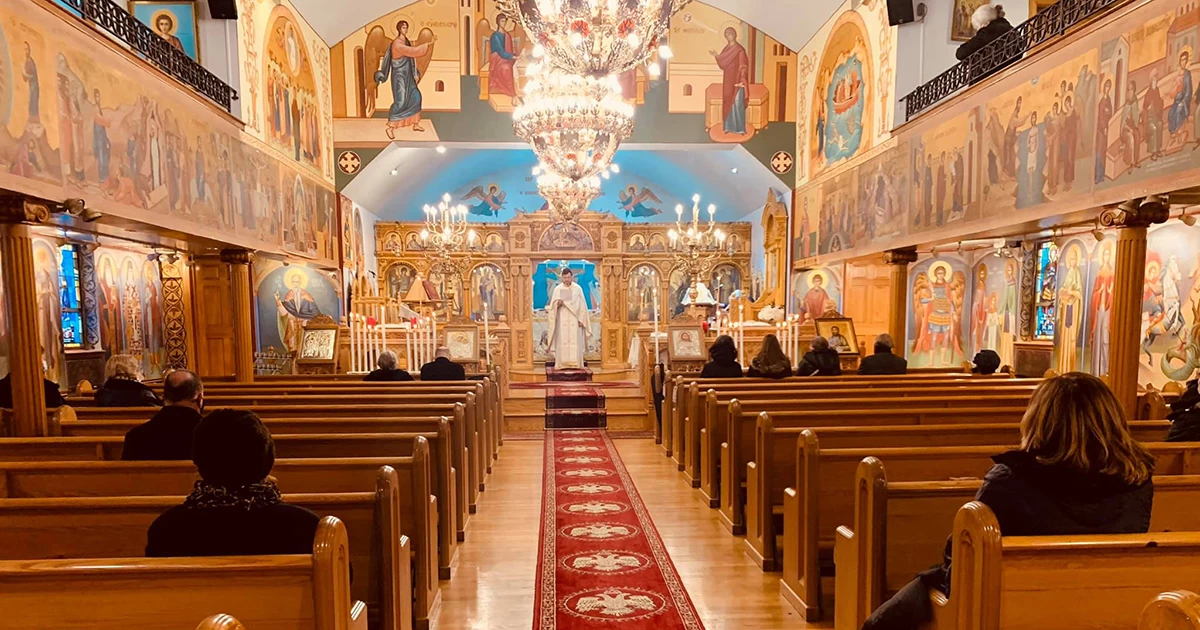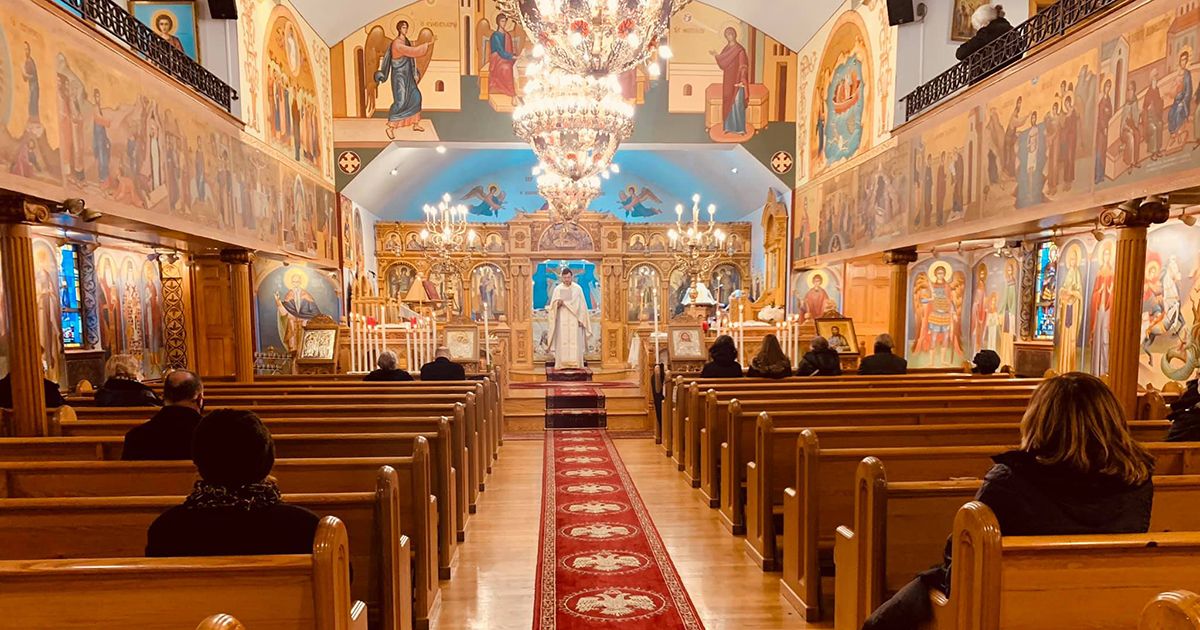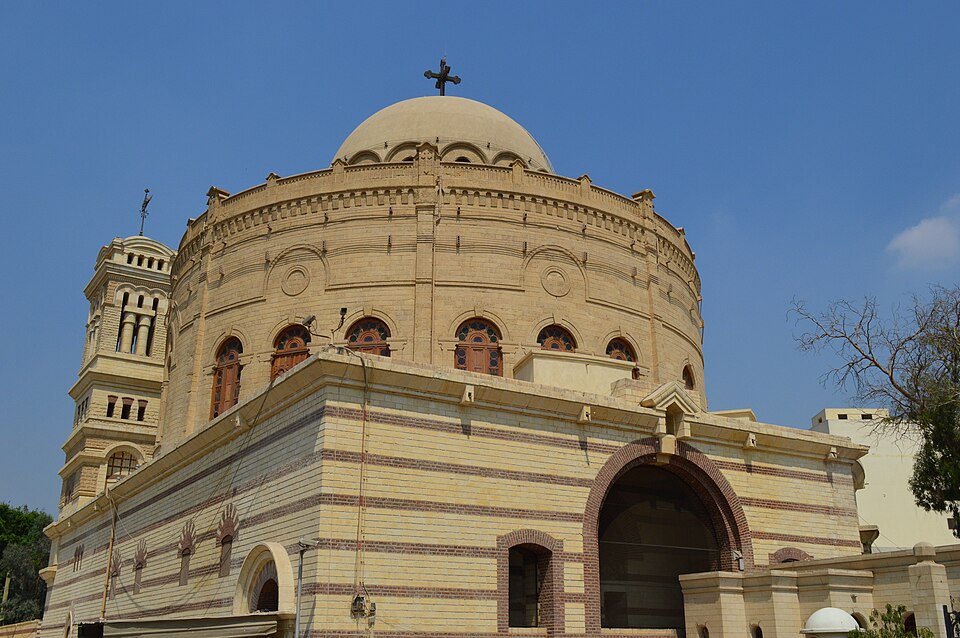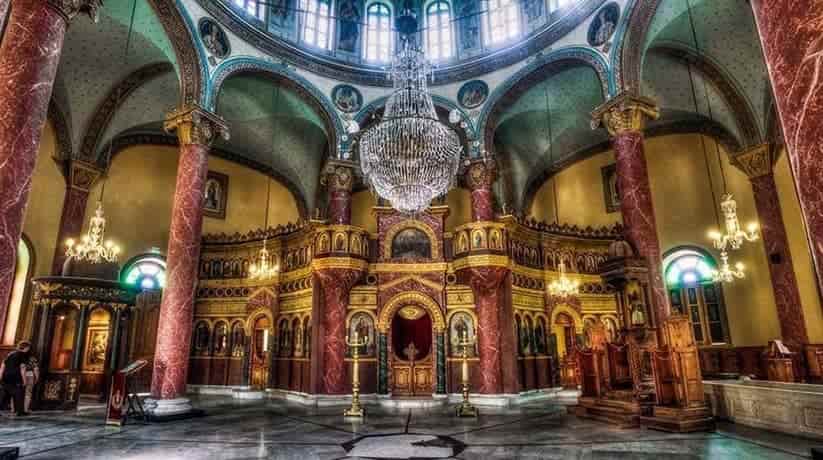


La Iglesia Ortodoxa Griega de San Jorge defiende con valentía la fe, la tradición y la identidad cultural de los cristianos ortodoxos griegos de todo el mundo. El nombre de la iglesia se atribuye a San Jorge Mártir, un santo cristiano recordado con gran respeto por su valentía y dedicación a Cristo. En las tradiciones orientales y occidentales, San Jorge es el santo soldado y protector de los fieles, por lo que se le recuerda por haber matado a un dragón, símbolo de la victoria de la virtud cristiana sobre el mal. Desde los primeros siglos del cristianismo, especialmente entre las iglesias ortodoxas orientales, existe una iglesia dedicada a San Jorge, un significado profundamente venerado. Su memoria se honra no solo por unirse a las filas del martirio, sino también como un guerrero espiritual que representa la fuerza y la convicción en la fe cristiana.
Las iglesias ortodoxas griegas de San Jorge de la era moderna tienen sus orígenes en las primeras comunidades de inmigrantes griegos que lucharon por una vida mejor, aferrándose firmemente a sus creencias, idioma y costumbres religiosas ortodoxas. Desde Nueva York, Chicago y Toronto hasta Brisbane y más allá, estas iglesias se convirtieron en puntos focales para el desarrollo de la preservación de la tradición ortodoxa griega y la vida comunitaria dentro de la diáspora.
Además de adaptarse a la vida en un país extranjero, los inmigrantes griegos priorizaron el establecimiento de una Iglesia Ortodoxa Griega. Estas iglesias se convirtieron en un referente espiritual que conectaba a generaciones con la vasta vida litúrgica, las fiestas y los sacramentos de la Iglesia Cristiana Ortodoxa. Durante y después de los servicios religiosos, muchas parroquias de San Jorge también sirvieron como centros culturales y educativos, enseñando el idioma griego, albergando organizaciones juveniles como GOYA y organizando festivales culturales que promovían la civilización y los valores helénicos. La historia de la Iglesia Ortodoxa Griega de San Jorge siempre ha sido un símbolo viviente de ese espíritu indomable que surge de la fe en la Iglesia Ortodoxa Griega, ya sea en Nueva York o en un tranquilo suburbio. Estas iglesias han sido metáforas vivientes de la continuidad, sosteniendo el pasado y el presente y nutriendo a las futuras generaciones con el legado espiritual y cultural del cristianismo ortodoxo.

El grabado arquitectónico de la Iglesia Ortodoxa Griega de San Jorge muestra el ejemplo más brillante del diseño bizantino y de la tradición cristiana ortodoxa. Caracterizado por la luz, las cúpulas celestiales, los iconos dorados, los mosaicos laberínticos y el iconostasio (biombo) tallado a mano, este santuario, más que un simple edificio, es una obra de teología. Cada detalle del interior de la iglesia está calculado y diseñado para elevar el alma y la mente hacia lo divino.
En muchas iglesias ortodoxas griegas históricas, una poderosa imagen de Cristo Pantocrátor suele adornar la cúpula central. Este icono vela por la congregación, recordando a los fieles que Cristo mismo está con ellos durante la Divina Liturgia.
El público visitante y los feligreses contemplarán:
Estas imágenes sagradas no son meras idiosincrasias para los ortodoxos: los iconos suelen denominarse "teología en color", escrituras visuales que educan, inspiran y atraen a los fieles a un encuentro más íntimo con Dios. En la Iglesia Ortodoxa Griega de San Jorge, estos elementos funcionan no solo a nivel estético, sino también espiritual, creando un espacio de comunión entre el cielo y la tierra.
Por lo tanto, en su investigación conjunta sobre las iglesias ortodoxas griegas, el arte de la religión bizantina o, en última instancia, como una experiencia para quienes visiten la Iglesia Ortodoxa Griega de San Jorge en su ciudad, este lugar sagrado les brindará una experiencia inolvidable que se nutre de siglos de fe, arte y culto.

La Iglesia Ortodoxa Griega de San Jorge, para generaciones de griegos que emigraron y sus descendientes, ha sido mucho más que un lugar de culto; se ha considerado el corazón mismo de la comunidad ortodoxa griega en el extranjero. Arraigada en la fe cristiana ortodoxa y la tradición helénica, San Jorge se convirtió en uno de los principales centros de preservación cultural, educación y vida social.
Ha servido como:
Mantenimiento de la identidad, el idioma y las costumbres helénicas a través de actividades y programas como la escuela griega, grupos de danza tradicional e instrucción religiosa.
Escenario para festividades griegas, ferias gastronómicas y celebraciones culturales, para que la gente pueda compartir su rico patrimonio gastronómico, musical y cultural con vecinos de todos los orígenes étnicos.
Fomento del diálogo interreligioso, la participación comunitaria y las iniciativas benéficas que promueven el bien común, dentro y fuera de los muros de la Iglesia.
Esta singular dualidad de adjuraciones: sagradas y sociales, ha establecido, en esencia, a la Iglesia Ortodoxa Griega de San Jorge como un punto de referencia tanto para la vida religiosa como para la memoria cultural en ciudades de todo el mundo. La iglesia sigue siendo un foro activo donde se marcha en procesión litúrgica, se disfruta de spanakopita casera en un festival griego o se participa en un evento juvenil, nutriendo la fe y la comunidad con gracia y tradición.
Desde visitar este espacio sagrado por primera vez hasta participar en uno de sus apreciados festivales griegos, uno se adentra en un lugar donde el pasado, el presente y la eternidad se entrelazan con elegancia. Esto no es simplemente una iglesia; simboliza la cristiandad ortodoxa, en perfecta armonía con la herencia griega y las tradiciones comunitarias.
Esto es lo que podrá ver en su visita a la Iglesia Ortodoxa Griega de San Jorge:
Viajeros, buscadores espirituales, historiadores y personas de la diáspora por igual encuentran en la Iglesia Ortodoxa Griega de San Jorge un vínculo profundamente hermoso con una vibrante cultura religiosa. Será recibido no solo por la majestuosa arquitectura bizantina o la eufórica celebración comunitaria, sino por un aliento vivo de cultura, patrimonio y belleza eterna.
Si se encuentra cerca de una ciudad bendecida con la presencia de la Iglesia Ortodoxa Griega de San Jorge, asegúrese de visitar esta histórica y sagrada iglesia.

En medio del ciclo histórico del mundo, la Iglesia Ortodoxa Griega de San Jorge se mantiene como un rayo de continuidad. La destrucción causada por la guerra, el cambio de congregación debido a la migración, la modernización y la secularización de la iglesia, de alguna manera, se mantuvieron a contracorriente. Su fundamento se basa en todo lo antiguo, extendiéndose hacia lo eterno.
A medida que el incienso asciende y el aire se impregna con los tonos melódicos de los cantos bizantinos, uno se enfurece con una sensación: no se encuentra en una iglesia cualquiera, sino en un santuario eternamente suspendido entre el cielo y la tierra.

Copyright © 2024 Todos los derechos reservados
